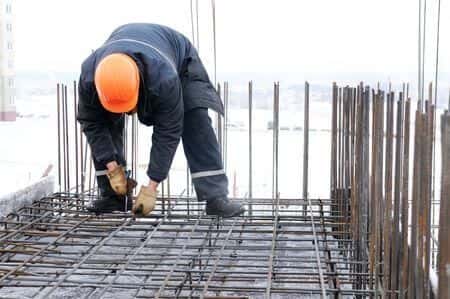Construction Safety Expert Evaluates Fatal Extension Ladder Accident
Updated on
Case Overview
This case involves a plaintiff who was severely injured while trying to attach a ladder to the side of a steel beam office building that was under construction. It was the worker’s first day at the job site, and the building was in the early stages of construction, with the building’s I-beams exposed to the elements. The steel beams had been coated with a protective layer of clear coating that was still drying at the time of the accident. The decedent attempted to place an extension ladder against one of the beams from the ground 20 feet below. As the decedent reached the top of the ladder it slipped on the wet coating, causing the ladder and the decedent to fall to the ground. The man was killed on impact with the ground. It was claimed that the ladder lacked critical safety features, including proper tie-offs, at the time of the accident.
Questions to the Construction Safety expert and their responses
Please describe your experience overseeing construction sites.
Over the course of my professional career, I have had the opportunity to visit thousands of active construction sites. This includes working directly with numerous contractors involved in the construction of bridges. I have assisted companies in the development and implementation of relevant policies and procedures, as well as associated employee training. I can speak to the standard of care for the general contractor and each individual contractor is defined as a legal matter and as an operational matter.
Are you familiar with steel beams and the proper way to use them?
I have a strong familiarity with steel beams.
What could have been done differently to prevent this from happening?
It is often the case that alternatives exist to the operations, conditions, tools, and equipment that were in use at the time of an accident. While I do not know the specifics of why this happened in this specific case, it is sometimes true that factors such as cost, access, project timing, and other relevant factors are re-evaluated after a conclusion. A proper job/task analysis completed at any time prior to this accident would have indicated the safest and best approach to each operation.
About the expert
This qualified expert of Safety Management obtained his BS in Safety and Accident Prevention from Illinois State University. He is Certified as a Safety Professional, in Risk Management, OSHA, and Emergency Planning. He is a member of several Safety Professional Societies and Associations and he is currently the Vice President of a Safety Management Consulting Firm.

E-008566
Specialties:
Subscribe to our newsletter
Join our newsletter to stay up to date on legal news, insights and product updates from Expert Institute.
Sign up nowFind an expert witness near you
What State is your case in?
Subscribe to our newsletter
Join our newsletter to stay up to date on legal news, insights and product updates from Expert Institute.


